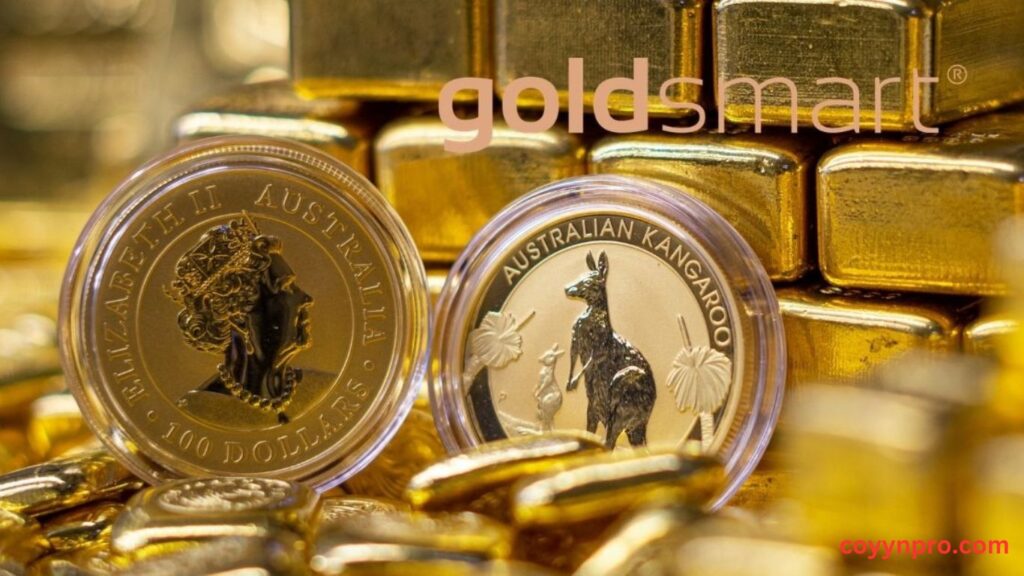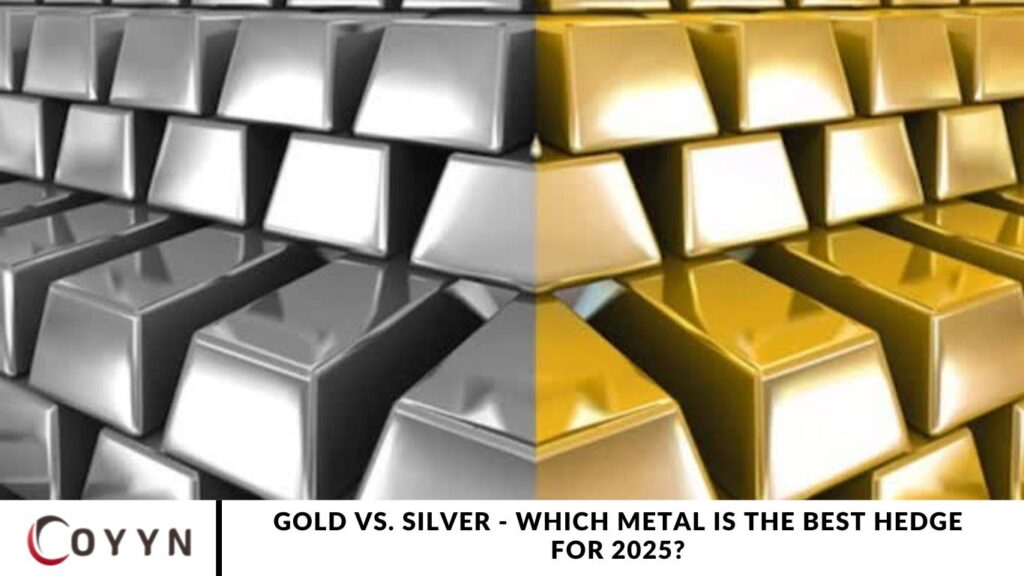Precious metals have long been a trusted hedge against economic downturns, inflation, and financial instability. Investors seeking wealth preservation often turn to gold and silver, two of the most popular assets for safeguarding capital. While both metals provide a buffer against uncertainty, their unique properties influence how they perform under different market conditions.
As 2025 approaches, concerns over inflation, geopolitical tensions, and economic volatility continue to shape investment strategies. But which metal offers the most vigorous hedge? The answer depends on key factors such as supply and demand dynamics, macroeconomic trends, and individual investment objectives. Understanding these elements can help investors make informed decisions about allocating their portfolios for maximum protection and profitability.
Why Do Investors Rely on Precious Metals?
During periods of economic uncertainty, traditional assets such as stocks, bonds, and real estate can experience heightened volatility. Inflation diminishes the purchasing power of cash, while central bank policies often contribute to market instability. This is where gold and silver stand out as reliable hedges.
Unlike fiat currencies and corporate assets, precious metals hold intrinsic value, making them less susceptible to the fluctuations of monetary policies or corporate performance. Instead, they act as alternative stores of wealth, preserving purchasing power even as paper currencies depreciate.
Key Differences Between the Metals
- Market Performance: Gold remains stable and thrives during economic crises, whereas silver’s value is heavily influenced by industrial demand.
- Supply & Demand: Gold’s supply is relatively consistent, while silver’s extensive industrial applications can lead to shortages and price surges.
- Price Volatility: Silver is more sensitive to economic fluctuations, making it highly volatile and presenting more significant profit potential for active traders.
- Liquidity & Storage: Gold is more straightforward to trade in large quantities and requires significantly less storage space.
- Investment Strategy: Gold is best suited for long-term wealth preservation, while silver provides more opportunities for short-term gains.
Gold: The Timeless Safe Haven
A close-up of multiple gold bars resting on scattered euro banknotes. The bars, branded “Global Intergold,” display weights of 100g and 1 ounce with a fineness of 999.9. | COYYN
Stability Over Speculation
Gold has been a trusted store of value for thousands of years. Unlike stocks or cryptocurrencies, its worth isn’t tied to a specific industry, government, or corporation. This universal reliability makes gold a dependable long-term hedge against inflation and economic instability.
Lower Volatility & Consistent Demand
Gold exhibits steadier price movements compared to silver, which is more prone to sharp fluctuations. Due to its proven resilience, investors turn to gold during financial crises. Additionally, central banks and institutional investors maintain significant reserves, ensuring sustained demand.
Protection Against Inflation & Currency Devaluation
As fiat currencies depreciate during inflationary periods, gold preserves purchasing power. Historically, it has surged in value when the U.S. dollar weakens or economic uncertainty increases, making it a reliable asset in turbulent times.
Silver: The Dynamic Contender

Stacks of polished silver bars engraved with “THE BANK” and “FINE SILVER 999.9.” One bar leans slightly against the others, reflecting light off their sleek, uniform metallic surface. | COYYN
Industrial Demand Fuels Growth
Unlike gold, which is primarily valued for investment and jewelry, silver plays a crucial role in various industries. It is a key material in solar panels, electric vehicles, medical devices, and electronics. As the global shift toward renewable energy and advanced technology accelerates, demand for silver could rise significantly.
Affordable Entry Point for Investors
Silver offers a cost-effective alternative to gold, making it accessible to a broader range of investors. Whether purchasing bullion, coins, or ETFs, silver allows individuals to diversify into precious metals without requiring substantial capital.
Volatility Creates Profit Opportunities
Silver’s price movements are more dramatic than gold’s, making it a high-risk but high-reward asset. While this volatility may deter some investors, short-term traders can leverage price swings to capitalize on potential gains.
Which Metal Will Perform Better in 2025?
- Inflation Trends: If inflation stays elevated, gold is likely to outperform due to its proven history as a reliable inflation hedge.
- Global Economic Growth: Expanding industries that rely on silver, such as green energy and electronics, could drive significant price gains.
- Central Bank Policies: Interest rate decisions by the Federal Reserve and other central banks will influence both metals, with lower rates benefiting gold the most.
- Geopolitical Events: Wars, trade disputes, and political instability often increase demand for safe-haven assets like gold and silver.
The accessibility advantage
For the average investor, silver provides an accessible entry into precious metals. At current prices, you could buy over 80 ounces of silver for the cost of a single ounce of gold. This affordability has earned silver the nickname “the people’s precious metal,” enabling more investors to participate in wealth preservation.
Think of silver as a speedboat compared to gold’s ocean liner—both can navigate you toward financial security, but silver offers greater flexibility and potentially quicker gains. This accessibility has drawn in investors who once felt priced out of traditional markets.
Frequently Asked Question
Why are gold and silver considered hedges against economic uncertainty?
Gold and silver have intrinsic value and are not directly affected by government policies or corporate earnings. They act as safe-haven assets, preserving wealth during inflation, recessions, and market instability.
Which metal is better for long-term investment in 2025?
Gold is generally preferred for long-term stability due to its historical role as a store of value. It tends to perform well during economic crises and inflationary periods, making it a reliable hedge.
Is silver a better short-term investment than gold?
Yes, silver is more volatile than gold, which can create short-term trading opportunities. Its price is influenced by industrial demand, meaning it may experience sharp price swings that traders can capitalize on.
How does inflation impact gold and silver prices?
Gold has a strong track record as an inflation hedge, often rising when fiat currencies weaken. Silver also benefits from inflation but is more influenced by industrial demand.
Which metal is more affected by industrial demand?
Silver has extensive industrial applications, including solar panels, electric vehicles, and electronics. This demand can drive price increases, especially as green energy initiatives expand.
How do central bank policies impact gold and silver?
Lower interest rates and monetary easing typically benefit gold by making non-yielding assets more attractive. These policies also influence Silver but are more sensitive to economic growth trends.
Is gold or silver more liquid?
Gold is more liquid, meaning it is easier to trade in large amounts without significantly affecting the market price. Silver, while also liquid, may have higher transaction costs and storage requirements.
Conclusion
Gold and silver both serve as valuable hedges against economic uncertainty, but the better choice depends on market conditions, investment goals, and risk tolerance.
Gold is ideal for long-term stability, offering a reliable safeguard against inflation, currency devaluation, and financial crises. Its lower volatility, high liquidity, and strong demand from central banks make it a trusted asset for preserving wealth.
Silver, on the other hand, has significant growth potential due to its industrial applications in renewable energy and technology. While it is more volatile than gold, this price sensitivity creates opportunities for short-term traders seeking higher returns.


